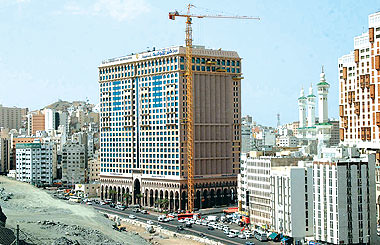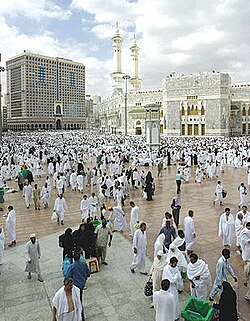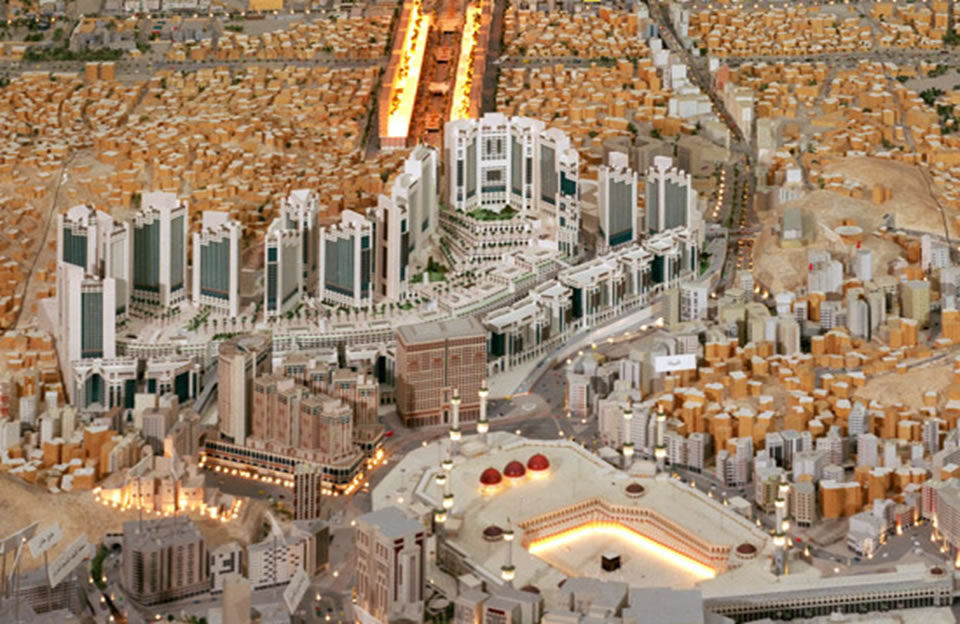The world community has rightly regarded Pakistan and Bangladesh as examples of theocratic states practicing policies of harsh discrimination against Hindus and other minorities.
Sri Lanka’s Singhala-centric policies have generated gross discrimination against its Tamil citizens. Beyond India’s South Asian neighbourhood, numerous Islamic states such as Afghanistan and Saudi Arabia follow unjust policies toward minorities of all kinds that are an affront to civilized values everywhere and at all times. India in contrast is seen as a shining example of a secular state.
With the Republic Day just gone by, it is time to ask: But is India really a secular state?
I do not think so.
Political secularism may be defined as the separation of religious activities from those of the state, customarily referred to as “the separation of church and state” in the west. Secularism in theory then would mean that religion and state cannot occupy the same space. The state in its governmental capacity does not promote any religion or religious group, nor does it intervene in religious affairs. It cannot even be involved in interpretation or “reform” of any religion much less favour one over any other. This model of secularism may be characterized as maximum separation between state and religion except on manifest grounds of morality, health, and public order. Theoretical formulation, interpretation, and implementation of secularism have varied in several countries. In Indian context, the votaries of Hindutva equate it with appeasement of minorities, thus “pseudo-secularism.” Apologists of Indian secularism call it “religious equi-distance, not non-involvement,” meaning that Indian state is neutral between religions and religious communities.

I demonstrate that in practice, Indian state actually privileges Hinduism over other religions and religious communities. The Indian state is in fact the defender of the dharma for the following five reasons.
1: Constitutional Discrimination
Article 25 (2) of the constitution calls for providing “social welfare and reform and throwing open of Hindu religious institutions of public character to all classes and sections of Hindus.” India’s constitution does not define who or what is a Hindu, but it defines followers of Buddhism, Jainism and Sikhism as Hindus for purposes of Hindu temple entry. Article 25 (2) (b) (Explanation II) states: “the reference to Hindus shall be construed as including a reference to persons professing the Sikh, Jaina or Buddhist religion…”

Isn’t this the concern of Brahmin establishment to allow or disallow whoever they deem fit to enter a temple? Why should a secular state be concerned with the social welfare of only one religion? The motive of the constitution writers was obvious: to prevent the conversion of Dalits to Christianity or Islam, to “reform” Hinduism to make it palatable to the former untouchables.
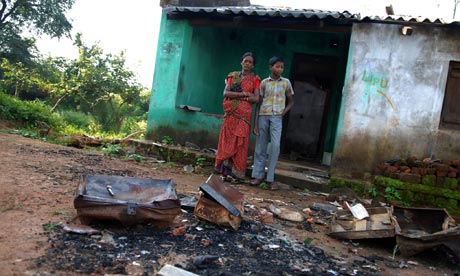
The Hindu Marriage Act of 1955 applies to
(a) any person who is a Hindu by religion in any of its forms and developments, including a Virashaiva, a Lingayat or follower of the Brahmo, Prarthana or Arya Samaj;
(b) to any person who is a Buddhist, Jain or Sikh by religion, and
(c) to any person domiciled in the territories who is not a Muslim, Christian, Parsi or Jew by religion.
In other words, legally there is no such thing as a Buddhist, Jain, or Sikh marriage, which is another attempt to deny other religions a distinctive identity and absorb them in the Hindu fold. The Office of the Registrar General that conducts the decennial census enumerates anyone who is not a Christian, Muslim or Parsi as Hindu, most particularly in tribal areas, in pursuance of a policy of Hindu by default to inflate the religious majority.

Article 290A of the Constitution, which was added in 1956, provides for Kerala state funds to be paid for the upkeep of Hindu temples and shrines in the territories of former princely state of Tranvancore. What state but a denominational one would spend government funds to promote a particular religion?
[As an aside, a forest has been destroyed in arguing for a uniform civil code as opposed to Muslim Personal Law and the issue of Haj subsidy. But perhaps I can save those issues for a full discussion at a different time]
2: Legislative Discrimination
Although freedom of religion is granted under the constitution’s Article 25 (1), a Congress government of Madhya Pradesh pioneered anti-conversion legislation during the heyday of Nehru in 1954. Since then as many as 7 state legislatures (Arunachal, Chhattisgarh, Gujarat, Himachal, Orissa, Rajasthan and Tripura) have passed laws severely restricting conversion from Hinduism to other religions while facilitating conversion to Hinduism.

In 1982, when a few hundred Dalits embraced Islam in Meenakshipuram, the central government took measures to curb conversions. No less than Indira Gandhi characterized conversions as a threat to national security.
Christian missions and churches have been under attack since decades, often with state complicity as demonstrated in August-September 2008 in Orissa and Karnataka.
Hundreds of mosques are in illegal possession nationwide including in New Delhi, where scores are occupied by the central government.
It was a Congress government that first locked up the Babari Mosque in 1949 by court order effectively converting it into a Hindu temple. What began under Nehru was successfully completed by Narasimha Rao in 1992 through the Mosque’s destruction under the very nose of army, paramilitary and police. It is ironic that the Indian state is ready to deploy army to flush out Sikh insurgents from Golden Temple and Muslim rebels from Charar-i Sharif, but not protect Babari Mosque from the Hindu mobs’ jack hammers.
The states of Gujarat and UP spent government funds to rebuild the Somanatha Temple around the same time when Babari Mosque was locked up. It was President Rajendra Prasad who inaugurated the rebuilt temple in 1951 amidst official fanfare.
3: Employment Discrimination
Article 16 (2) of the constitution prohibits discrimination in public employment on religious grounds. Yet there are numerous examples of outright discrimination. Per Presidential orders of 1950 and 1956 the beneficiaries of Scheduled Castes’ reservation can only be Hindus, Sikhs and Buddhists but not Christians and Muslims. If an SC changes religion after obtaining employment or admission to school, he or she must forfeit job and withdraw from school as has happened in numerous instances. But if the SC reverts to Hinduism, he or she can resume his/her status as an SC as courts have ruled.

Discrimination in Army
Right after 1947, Kashmir’s predominantly Hindu army was absorbed in the national army; whereas Hyderabad’s largely Muslim army was disbanded, rendering nearly 20,000 jobless. The Indian army’s infantry regiments are still based on religion (Sikh regiments), or ethnicity (Gorkha) or caste (Rajput) or region (Garhwal) in which members of other faiths, ethnicities, and regions are barred.

While a bearded Sikh may become chief of the army staff as did Gen. J.J. Singh, a Muslim may not sport beard in any of the armed forces. Only Jhatka is served in army messes andlangers forcing Muslims to become vegetarian. A Hanuman temple greets visitors upon entering virtually every cantonment in the nation, hinting non-Hindus that they don’t belong there. In their public addresses to the soldiers and officers, at least two army chiefs—Generals B.C. Joshi and Shankar Roy Chowdhury—have used references to Hindu scriptures to the exclusion of the Quran and the Bible.
4: Cultural Discrimination
There are numerous examples where Hindu culture is conflated with Indian culture. The ban on cow slaughter deprived thousands of butchers their livelihood even as it stole millions of poor their only source of inexpensive protein. Cow may be sacred to the upper castes, but not so to the Christians, Dalits, and Muslims. Food taboos of some higher castes do not end at beef. Beyond beef, eggs may not be sold publicly by court order as it offends some caste sensibilities. Nor can school children bring food of their choice if it offends Hindus.

Official functions of the government whether at the central or state levels often commence with Hindu ceremonies of lighting lamps, breaking coconuts, and recitation of slokas. There is no disapproval to the fact that functions of central and state ministries of education begin withSarasvati vandana .
In September 1993, Air India took delivery of a Boeing 747 in Seattle, Washington where the Ramakrishna Mission performed a puja invoking Lord Ganesha. Ministers lay foundation stones of government buildings preceded by bhoomi puja ceremony as if the state belongs only to Hindus. In Vishakhapatnam, I witnessed a ship launch amid saffron-robed, ashen facedsadhus singing bhajans, a function nearly mistaken as a Hindu festival.
In a trip to the United States in 1984, AP Chief Minister N.T. Ramarao found nothing objectionable in spending government funds for distributing medallions with Sri Venkateshwara’s image among potential investors in his state.
 Hindu's Attack on Babri Mosque
Hindu's Attack on Babri Mosque
A large stone image of a reclining Vishnu located at the entrance to the IGP’s headquarters in Bangalore is more fitting for a temple than a secular state’s police building. Almost every police
thana in West Bengal has a Kali temple, none has a mosque in a state with nearly 30 percent Muslim population. Muslim police trainees in Andhra Pradesh,

School children in
Gujarat, Maharashtra and numerous other states have been forced to perform
Surya namaskar against their will. Government school texts in Hindi and regional languages assume all pupils to be Hindu as the contents are soaked with idioms, phrases, signs, symbols, and icons of Hinduism to the exclusion of material from other religions and cultures. Textbooks of history and social studies are replete with gross distortions of Indian history of all eras, ancient, medieval and modern, in which Muslims and Christians are invariably the villains, traitors and foreiners.
Until the advent of television in the 1980s, All India Radio was the main source of information and entertainment to middle classes. The government-controlled AIR began its programs withVande Mataram, Mangala dhwani, Vandana, and Hindu lyrics. Rarely did AIR broadcast anything pertaining to Christian or Muslim cultures. Like the AIR, during its heyday, seldom does Door Darshan show any serials of Muslim or Christian character. When it broadcasted serials of historical or literary figures—Tipu Sultan, Ghalib—they were caricatured into modern stock characters stripped of their distinctive cultural identity.
Killing of People On religion Base In Indian Gujarat By Hindus
5: Religious Pogroms
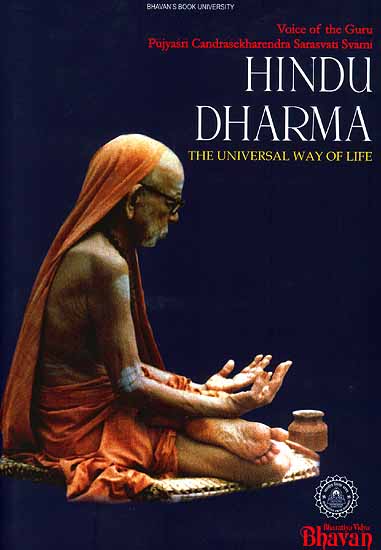
Finally no modern, secular democracy other than India experienced multiple, state-sponsored pogroms—that of Sikhs in 1984 and of Muslims in 2002. In both instances, the highest in the Executive branch of the government justified the pogroms: Rajiv Gandhi when his mother was murdered; and Narendra Modi when the train burned in Godhra.
For all these five reasons, India is not a secular state. It is in fact the defender of Hindu dharma.






 The city is located 70 km (43 mi) inland from Jeddah in a narrow valley at a height of 277 m (909 ft) above sea level. Its resident population in 2012 was 2 million, although visitors more than triple this number every year during Hajj period held in the twelfth Muslim lunar month of Dhu al-Hijjah.
The city is located 70 km (43 mi) inland from Jeddah in a narrow valley at a height of 277 m (909 ft) above sea level. Its resident population in 2012 was 2 million, although visitors more than triple this number every year during Hajj period held in the twelfth Muslim lunar month of Dhu al-Hijjah.
